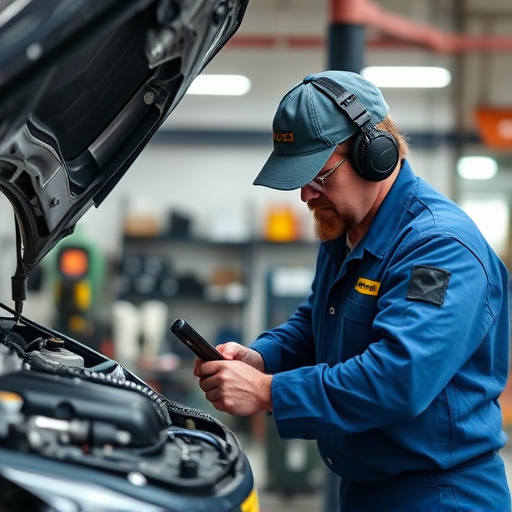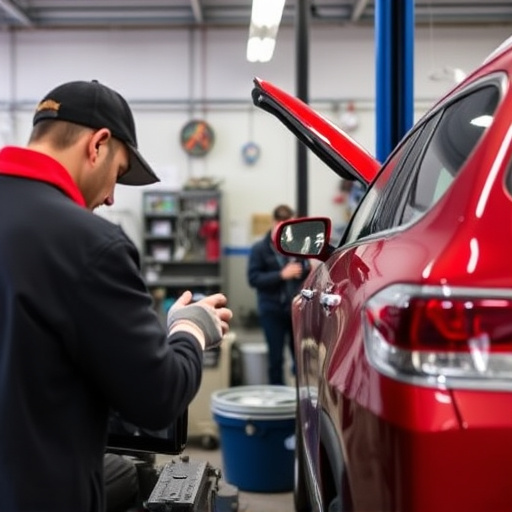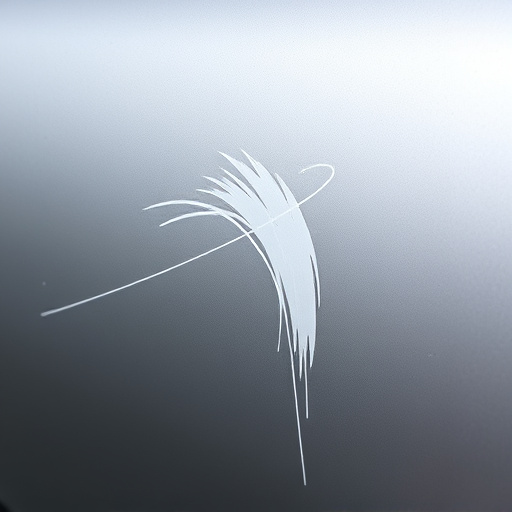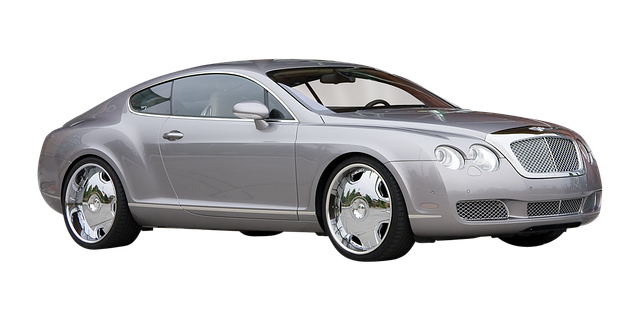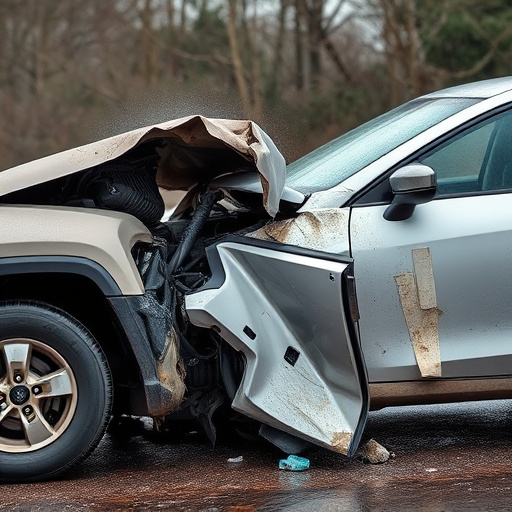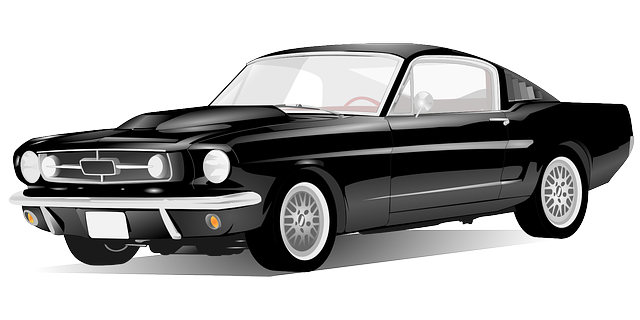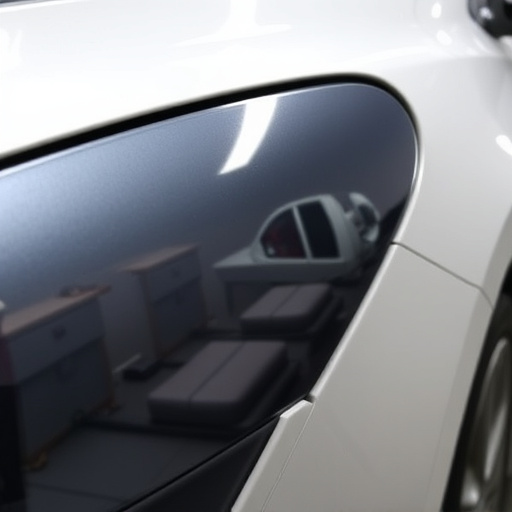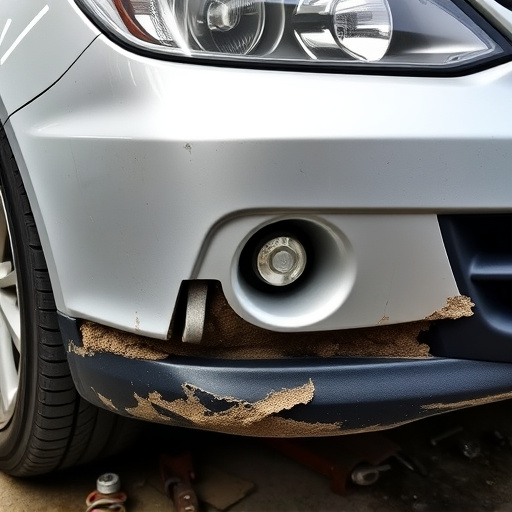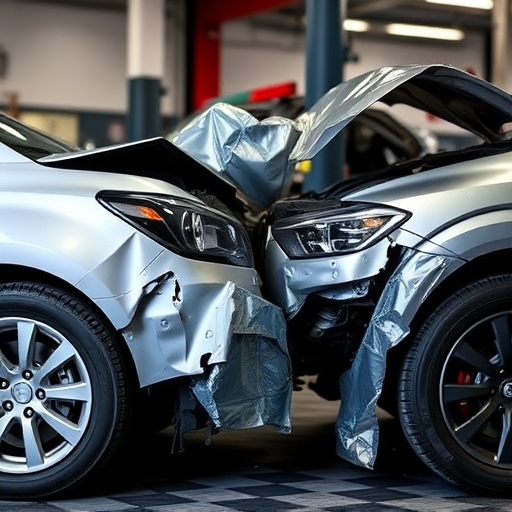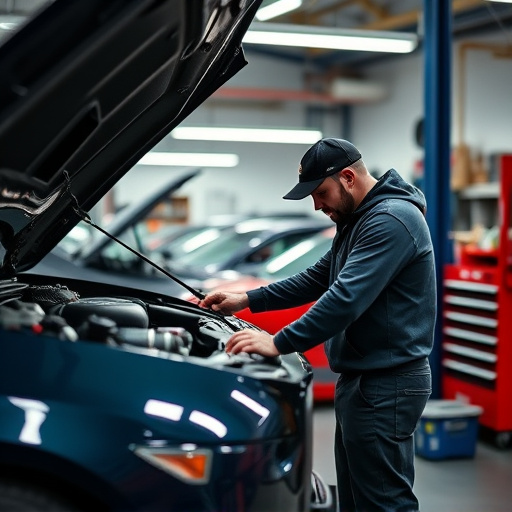Waterborne paint technology is a revolutionary eco-friendly solution for auto repairs, offering a sustainable alternative to traditional solvent-based paints. Its key advantages include reduced environmental impact, faster drying times, superior adhesion, and corrosion resistance, making it ideal for various repair applications. This technology has transformed vehicle collision repair, providing professional-grade finishes with exceptional coverage, while also enhancing workshop air quality by minimizing volatile organic compound (VOC) emissions. By adopting waterborne paint technology, collision centers can deliver high-quality repairs faster, contributing to both sustainability and customer satisfaction.
Waterborne paint technology has emerged as a game-changer in the auto repair and restoration industry, offering numerous advantages over traditional paint methods. This innovative approach uses water-based paints, providing a more environmentally friendly and efficient solution for restoring vehicles to their original condition.
In this article, we’ll explore the benefits of adopting waterborne paint technology, from improved application techniques to reduced VOC emissions and faster drying times. We’ll also guide you through the implementation process and best practices for achieving flawless results in auto repairs.
- Understanding Waterborne Paint Technology: A Brief Overview
- Advantages of Waterborne Paints in Auto Repair and Restoration
- Implementation and Best Practices for Using Waterborne Paint Technology
Understanding Waterborne Paint Technology: A Brief Overview
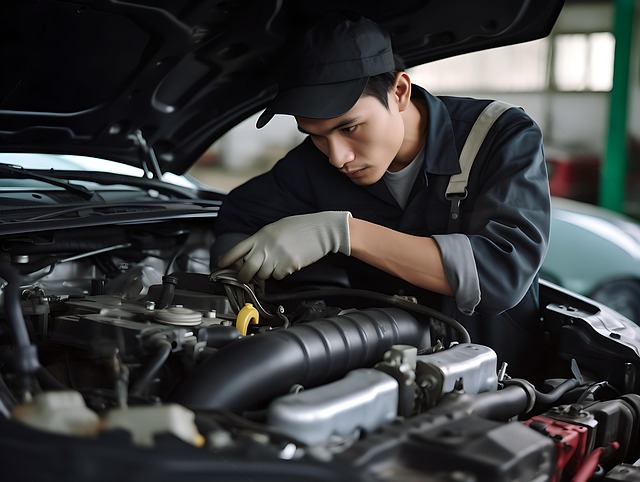
Waterborne paint technology has emerged as a game-changer in the auto repairs landscape. Unlike traditional solvent-based paints, waterborne paints use water as a carrier instead of volatile organic compounds (VOCs). This not only makes them more environmentally friendly but also offers superior performance characteristics for vehicle body shops. By reducing VOC emissions and ensuring faster drying times, this technology aligns with modern sustainability goals while enhancing the quality of repairs in auto glass repair and car dent repair processes.
The benefits extend beyond environmental considerations. Waterborne paint technology provides better coverage, reduced dripping and running, and enhanced adhesion on various surfaces, making it suitable for a wide range of auto body repair applications. This advanced system also offers improved corrosion resistance, ensuring longer-lasting finishes that protect the vehicle’s exterior from elements, enhancing its overall appeal in the car dent repair segment.
Advantages of Waterborne Paints in Auto Repair and Restoration

Waterborne paint technology has revolutionized vehicle collision repair and restoration processes. One of its primary advantages is the reduced environmental impact compared to traditional solvent-based paints. Waterborne paints are more easily applied, dry faster, and offer a smoother finish, resulting in high-quality auto detailing outcomes. This eco-friendly approach not only benefits the planet but also ensures safer working conditions for repair technicians due to lower volatile organic compound (VOC) emissions.
Furthermore, these paints provide exceptional coverage and durability, effectively hiding scratches and imperfections during car scratch repair processes. Their versatility allows for a wide range of colors and finishes, catering to various customer preferences. The technology’s ability to create uniform coats without runs or bubbles ensures professional-grade repairs, enhancing the overall aesthetics and value of vehicles undergoing restoration.
Implementation and Best Practices for Using Waterborne Paint Technology
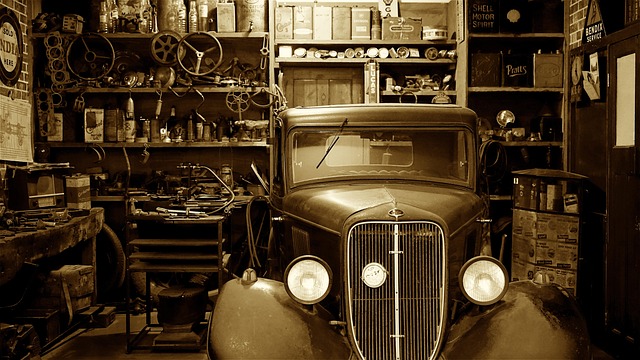
The implementation of waterborne paint technology in auto repairs offers a range of benefits for collision repair shops and vehicle dent repair professionals. This eco-friendly approach to car paint services reduces the use of volatile organic compounds (VOCs), making it a more sustainable option. By adopting this technology, repair facilities can significantly cut down on emissions and improve air quality within their workshops.
Best practices for utilizing waterborne paint involve ensuring proper ventilation during application to maintain optimal working conditions. The technology requires specific equipment, including water-based paint systems, low-VOC or water-born paints, and appropriate spray guns. Proper surface preparation is crucial; vehicles should be thoroughly cleaned and sanded to achieve a smooth finish. A consistent painting process, following the manufacturer’s guidelines, ensures high-quality results. This method allows for quicker drying times compared to traditional latex paints, reducing overall repair turnaround. For collision repair shops aiming to stay ahead in their field, integrating waterborne paint technology is a strategic move that benefits both the environment and the quality of repairs.
Waterborne paint technology is transforming auto repairs and restoration, offering significant advantages over traditional methods. Its environmental friendliness, improved durability, and reduced VOC emissions make it an eco-conscious choice. By adopting this technology, repair shops can enhance their efficiency, reduce costs, and provide high-quality finishes that stand the test of time. Implementing waterborne paint requires proper training and equipment, but the benefits far outweigh the initial investment, making it a smart choice for modern automotive care.
